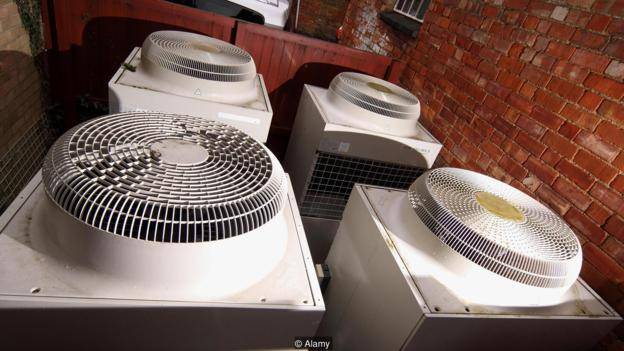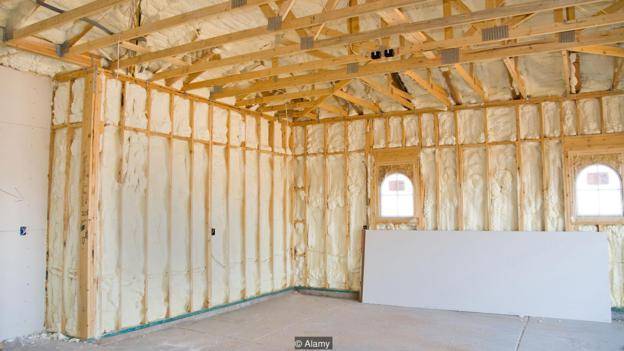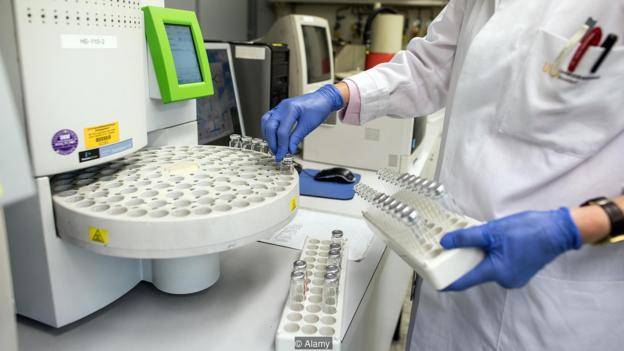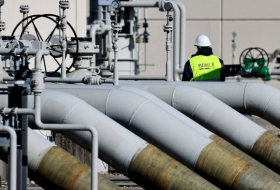It was a research station on the side of a volcano, 4,000 metres above sea level, that picked up the key signal: despite an international ban, someone, somewhere, was emitting an ozone-damaging pollutant.
Stephen Montzka of the US’s National Oceanic and Atmospheric Administration (NOAA) was the first to notice. He had been analysing data collected at various sites since 2013. The measurements suggested that the decline of a dangerous chemical in the atmosphere, CFC-11, had been unexpectedly slowing down. “The finding was so surprising I had to be sure it was real,” he recalls.
The finding was so surprising I had to be sure it was real – Stephen Montzka
But it was the Mauna Loa data that convinced him. Since the 1950s, the Mauna Loa Observatory on the giant Hawaiian volcano of the same name has continuously monitored air as it wafts across the Pacific Ocean. In May 2018, an article published in the journal Nature revealed the worrying discovery in detail – CFC-11 was blowing over the Pacific Ocean from East Asia.
Now, an international investigation is underway to find the source. That process could never have started without those initial measurements. By ‘sniffing the air’ and monitoring the levels of various gases in it, scientists are able to detect the presence of pollutants. This is the story of how they do it – and what happens when they find something fishy.
Chlorofluorocarbons, or CFCs, were banned internationally in 1996 under an important treaty called the Montreal Protocol. Through the treaty, countries around the world decided how they would protect ozone – a trace gas in the atmosphere that keeps out ultraviolet radiation emitted by the sun. CFCs contain the ozone-destroying gas chlorine, which is gradually released from the CFCs as they linger in the atmosphere. Stopping CFCs from being used in products and by industry was meant to result in their steadily accelerating decline.

If not disposed of properly, common household appliances like air conditioners and refrigerators can release CFCs into the air (Credit: Alamy)
But Montzka and colleagues noticed that, since 2012, the rate of decline for a particular CFC, trichlorofluoromethane – CFC number 11 – had gone off track.
There were various bits of evidence that pointed to a potential new source of CFC-11, says co-author Alistair Manning at the UK Met Office. This included the fact that the gradient, or difference in levels of atmospheric CFC-11 in the northern hemisphere and southern hemisphere, was diverging.
“That narrowing of the gradient – it was starting to widen again, which then pointed to the fact that maybe there are new emissions in the northern hemisphere,” he says.
But that wasn’t enough to prove that someone was emitting a lot more CFC-11. It took the Mauna Loa data to reveal that. Manning was able to use the Met Office’s atmospheric dispersal-modelling tool to confirm the likely place from which this potential new CFC-11 had originated. He discovered that whenever Montzka’s CFC-11 measurements at Mauna Loa were lower, there was less wind from the direction of East Asia.
“That’s another part of the jigsaw – something happening in East Asia that could possibly be causing this increase in emissions,” says Manning.
When news broke that the prohibited gas appeared to be leeching out of East Asia, many were keen to look more closely. The UN, for one, has launched an investigation. But the paper in Nature also caught the attention of the Environmental Investigation Agency (EIA), a charity that campaigns against environmental crime and abuse.
“As soon as we read it… we realised it was a really big deal,” says Clare Perry, a campaigner at the agency.

When asked, several companies allegedly admitted to using CFC-11 to mix up insulating foam (Credit: Alamy)
She and her team immediately thought to look for potential sources of CFC-11 in China. Researchers contacted several Chinese companies that process chemicals or make products that could be insulated with foam containing bubbles of CFC-11. The responses were candid. A representative at one firm allegedly said, “We purchase CFC-11 and mix it up. You see, nobody comes to inspect our processing work.”
In all, the EIA says it received indications from 18 companies that they use CFC-11 in some form, often when blowing insulating foam into appliances and buildings.
The challenge now is to prove that such activity can account for the additional volume of CFC-11 apparently being released every year: about 13 million kilograms, according to Montzka and his colleagues.
“Sniffing the air” sounds simple, but the science involved in actually measuring molecules or particles in the atmosphere is a little more complex. The method used to detect the CFC-11 at Mauna Loa was gas chromatography, a process by which gases in a sample of air are separated along a long, coiled tube. As they’re blown along the tube, the rate at which they arrive at the other end is measured and compared. Larger particles, for instance, arrive more slowly than smaller ones. Mass spectrometry, the science of identifying molecules by their mass, is often used in conjunction with chromatography.

Gas chromatography is used for a variety of purposes; here, it is used to analyse blood alcohol levels at a lab in Germany (Credit: Alamy)
And then there’s the instrumentation needed to measure particulate, tiny clumps of solids or liquids that float around in the air.
This can be done by shining light through, say, a column of smoke and measuring how the light is scattered sideways off the particles. Tools that do this sort of measuring were unexpectedly put to the test this year, when a large wildfire broke out on Saddleworth Moor in the north of England in June. The fact that something was burning was no mystery – in fact, the fire was so large that a plume of smoke from it was easily visible from space.
But how polluting was the fire? That’s something not discernible with the naked eye. To find out, a new array of instruments for measuring air quality at the University of Manchester were used. They revealed an extremely high concentration of particulate, which is highly polluting. The particulate comes from organic matter, vegetation, as it burns and smoulders. In fact, the lingering smouldering stage of a wildfire is when vast amounts of particulate matter are released.

One of the most polluting stages of a wildfire, like the one shown here at Saddleworth Moor, is when it is smouldering (Credit: Getty Images)
As with CFCs, part of the objective in keeping an eye on the atmosphere is to see whether countries are accurately reporting how much of a certain pollutant they have emitted in a given period. These declarations are often required as part of environmental protection regulations.
Sometimes, this kind of double-checking yields good news.
Earlier this year, a paper reported that California appears to be accurately cataloguing its fossil fuel carbon dioxide (CO2) emissions. To check, co-author Heather Graven of Imperial College, London and her team used accelerator mass spectrometry to measure the ratio of different kinds of carbon in atmospheric CO2. Carbon-14 is a new, slightly radioactive carbon that is produced naturally in the atmosphere. Fossil fuel carbon has been around for many millions of years and has consequently decayed to become carbon-12, which has a slightly smaller mass and is no longer radioactive. Therefore, a lower ratio of carbon-14 to carbon-12 in the atmosphere is an indication that fossil fuel CO2 emissions are up.
“From the data that we have, and incorporating atmospheric models, we found what we observed is very similar to what we expected,” says Graven.
“The atmospheric data is providing a tentative validation of what California is reporting.”
What floats around in the air doesn’t just tell us about fossil fuel pollution or the release of banned chemicals – it can also reveal unreported activity with nuclear weapons and radioactive materials used in the nuclear energy industry.

Atmospheric data can also tell us about unreported activity with nuclear energy materials (Credit: Alamy)
There is a worldwide radionuclide monitoring network that takes constant samples of the air in an effort to pick up unexpected radioactivity. After an above-ground nuclear accident or explosion, radioactive isotopes, or radionuclides, are released into the atmosphere and blown around by the wind. Stations all over the globe sample the air once a dayand radiation detectors can tell exactly which isotopes are present.
In October 2017, the French radiation safety authority (IRSN) disclosed that a strange, small spike in ruthernium-106 had been detected by several European networks.
The IRSN was quick to determine that the levels wouldn’t be harmful to human health, but discovering this particular isotope was a worry, recalls Jean-Luc Lachaume at the IRSN.
“This level of activity is totally unusual,” he says. “That radionuclide is an indicator of an incident or accident at a nuclear facility.”
We know this because specific kinds of nuclear activity cause specific radionuclide releases. For example, you might expect to see some iodine-131 in the atmosphere, says Lachaume, because it is associated with radioactive materials used in hospitals. Ruthenium-106 is much rarer.
Public information, including some found online, raised the suspicions of IRSN researchers that the source of the radionuclide was Mayak, an isotope plant in Russia, which had been due to produce cesium-144 in 2017. The industrial process for making that isotope would involve the creation of ruthenium-106. What’s more, analysis of wind patterns – much like the work done to investigate the source of CFC-11 – also suggested a place of origin in eastern Russia.
Did an accident at Mayak cause the unintended release of ruthenium-106 into the skies over Europe?
There are some mysteries in the universe and this is one of them - Jean-Luc Lachaume
When quizzed about it, Russian officials said there was no safety incident at Mayak to report. Lachaume has been left not knowing exactly what to think, given the lack of conclusive evidence that Mayak definitely was the source.
“There are some mysteries in the universe,” says Lachaume, “and this is one of them.”
But with scientists around the world ‘sniffing the air’, some mysteries are becoming easier to solve. In the wake of nuclear accidents or illegal, unreported emissions, these people are often the first to know – the first to reveal an otherwise invisible truth.
BBC
More about: ozone
















































